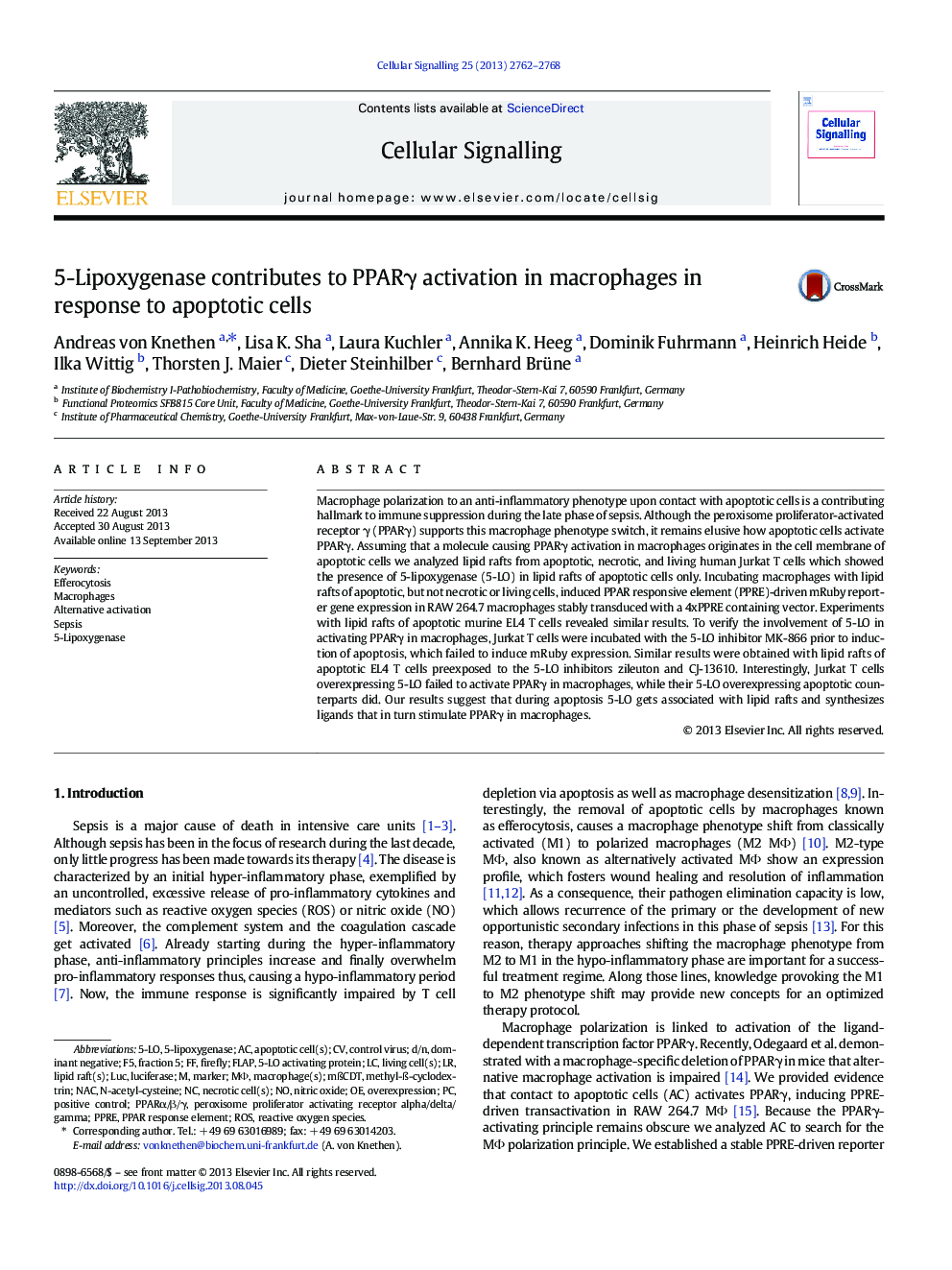| Article ID | Journal | Published Year | Pages | File Type |
|---|---|---|---|---|
| 10816165 | Cellular Signalling | 2013 | 7 Pages |
Abstract
Macrophage polarization to an anti-inflammatory phenotype upon contact with apoptotic cells is a contributing hallmark to immune suppression during the late phase of sepsis. Although the peroxisome proliferator-activated receptor γ (PPARγ) supports this macrophage phenotype switch, it remains elusive how apoptotic cells activate PPARγ. Assuming that a molecule causing PPARγ activation in macrophages originates in the cell membrane of apoptotic cells we analyzed lipid rafts from apoptotic, necrotic, and living human Jurkat T cells which showed the presence of 5-lipoxygenase (5-LO) in lipid rafts of apoptotic cells only. Incubating macrophages with lipid rafts of apoptotic, but not necrotic or living cells, induced PPAR responsive element (PPRE)-driven mRuby reporter gene expression in RAW 264.7 macrophages stably transduced with a 4xPPRE containing vector. Experiments with lipid rafts of apoptotic murine EL4 T cells revealed similar results. To verify the involvement of 5-LO in activating PPARγ in macrophages, Jurkat T cells were incubated with the 5-LO inhibitor MK-866 prior to induction of apoptosis, which failed to induce mRuby expression. Similar results were obtained with lipid rafts of apoptotic EL4 T cells preexposed to the 5-LO inhibitors zileuton and CJ-13610. Interestingly, Jurkat T cells overexpressing 5-LO failed to activate PPARγ in macrophages, while their 5-LO overexpressing apoptotic counterparts did. Our results suggest that during apoptosis 5-LO gets associated with lipid rafts and synthesizes ligands that in turn stimulate PPARγ in macrophages.
Keywords
Related Topics
Life Sciences
Biochemistry, Genetics and Molecular Biology
Biochemistry
Authors
Andreas von Knethen, Lisa K. Sha, Laura Kuchler, Annika K. Heeg, Dominik Fuhrmann, Heinrich Heide, Ilka Wittig, Thorsten J. Maier, Dieter Steinhilber, Bernhard Brüne,
